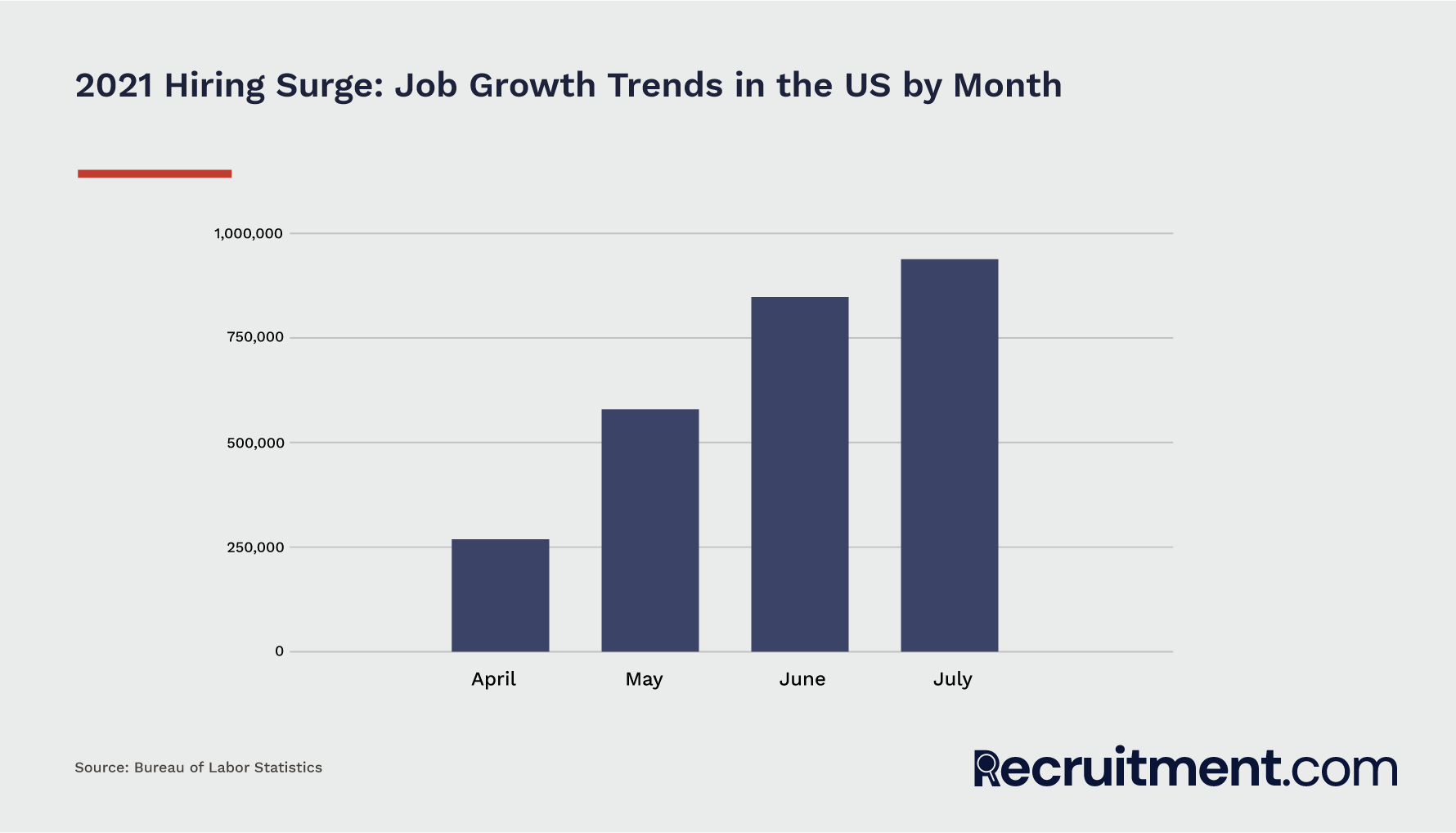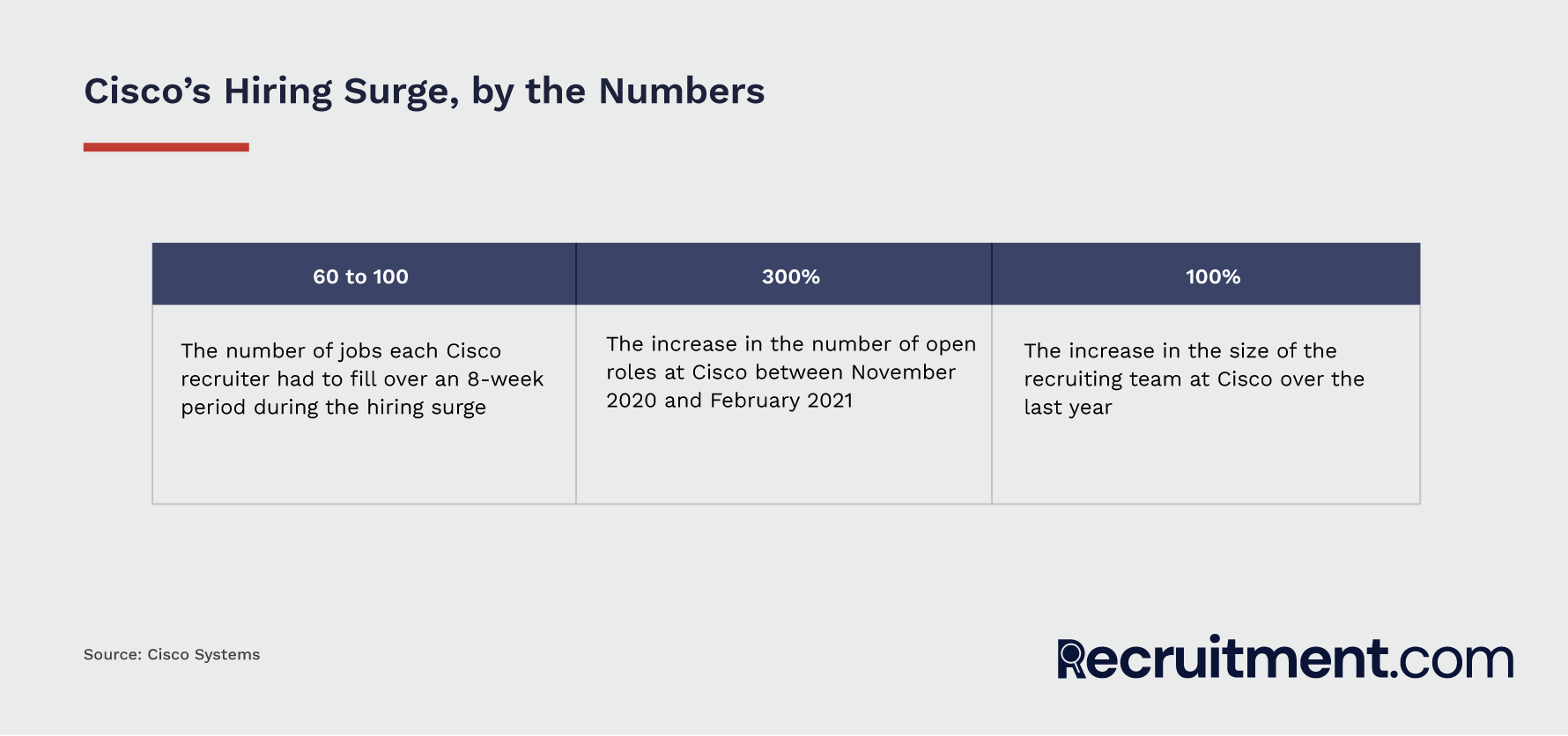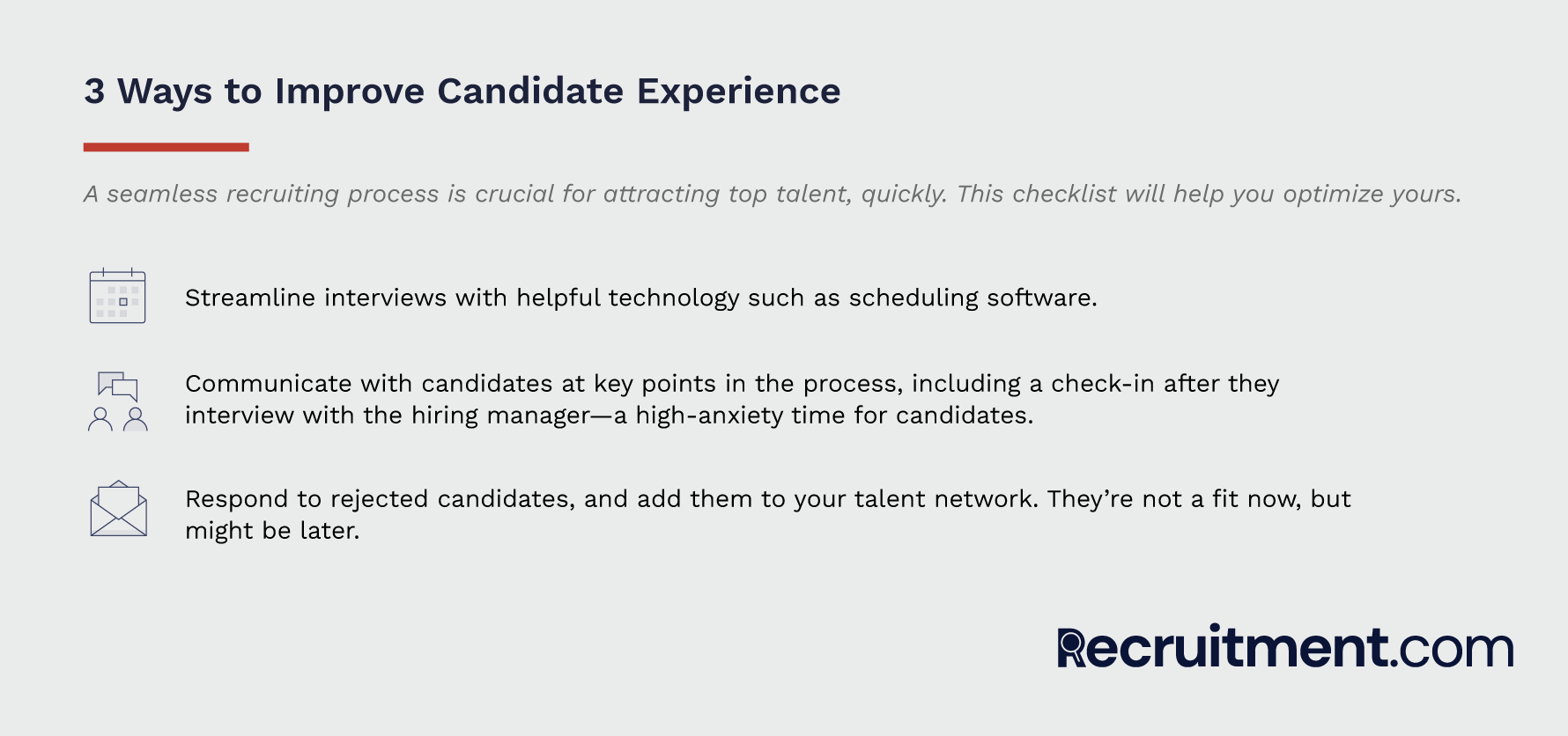Recruitment Case Study: How Cisco Systems Prepared for the 2021 Hiring Surge

Serena Kappes is a workforce expert who advises Ivy League graduates on how to connect with recruiters and break into their desired industries. She has also worked with Korn Ferry, Acorns Securities, and MarketWatch.
Cisco’s VP and Global Head of Talent Acquisition and Mobility tells Recruitment.com how her team increased post-pandemic hiring and efficiency.
Recruiters have had a difficult year, going from lockdown-related layoffs and hiring freezes to a hiring surge. Right now, there are more open jobs than there were before the COVID-19 lockdowns began, but fewer people in the workforce to fill them. And businesses continue to bring more roles to the marketplace: The US economy added 943,000 jobs in July, according to the Bureau of Labor Statistics—up from 850,000 in June and 583,000 in May.
Considering past and current conditions, it’s no wonder that 61% of recruiters report increased work stress, and nearly one in five say they’ve experienced a “drastic” increase in job stress, according to Jobvite’s 2020 Recruiter Nation Survey of just over 800 US-based recruiting and HR professionals. With the threat of burnout looming, some industry experts cite the rapid staffing of urgently needed roles as a major factor in those stress increases.

This hiring surge started hitting Cisco Systems, a Fortune 100 networking, cloud, and cybersecurity company based in San Jose, California, more than a year ago. Kelly Jones, Vice President, Global Head of Talent Acquisition and Mobility at Cisco, tells Recruitment.com that between November 2020 and February 2021, the Cisco recruiting team had a 300% increase in job roles to fill. “In some areas, we had a 500% increase in demand. We went from a defined capacity model to it just going off the charts,” says Jones.
To meet this increased demand, Jones and the talent acquisition team at Cisco overhauled the company’s system to speed up recruiting efforts and increase efficiency. Here, she shares their strategy with Recruitment.com.
Hire More Recruiters, and Onboard Them Faster
Cisco more than doubled the size of its recruiting team in the past year. “We had to accelerate onboarding in a much more structured way,” says Jones. The team mapped out what recruiters should know and do in the days leading up to their start date with the company, on their first day at work, and for the entire first month after they started. “That made a tremendous difference getting people ready to actually carry requisitions.”
Pre-onboarding activities, such as watching training videos and immersing themselves in the “Cisco story,” provided new recruiters with a more seamless integration into the team. “It’s tempting when you’re that busy to bring people in and put them right into the work. ‘You’re here. Go take some reqs,’” says Jones. “We took a structured process around this to say, ‘It’s worse to send someone out who isn’t ready.’”
Another way to fill out your recruiting team is to focus on skills over specific recruiting experience when considering new hires. The current shift toward skills-based hiring opens up the candidate pool. “We’ve brought on external talent who have no recruiting experience into Cisco. And we do it thoughtfully,” says Jones. Skills such as excellent communication and relationship-building, storytelling prowess, and ability to influence can go a long way in building a cohesive recruitment team.
Create a Nimble Recruitment Team That Can Pivot When Needed
Hiring top talent efficiently requires a robust recruitment team—and the ability to restructure that team during high-volume periods when it’s essential to deliver.
When Cisco underwent its “off the charts” hiring surge at the end of fiscal year 2020, “recruiter capacity increased dramatically, and within eight weeks, requisition loads had more than tripled,” says Jones. “We had recruiters with as many as 100 requisitions. This momentum continued, and for every req we closed, two opened through July.” One way Cisco addressed this overload was to institute a self-service process that gave hiring managers the ability to review resumes directly from the internal system instead of having to wait for recruiters to review them—and also allowed hiring managers the ability to schedule interviews themselves.

In 2021, the company also restructured its talent acquisition department so that recruiters could source candidates with certain skills for openings all over the company, rather than focusing on one particular department. “So, if you’re looking for a software developer with X, Y, Z skills, you may have that need across more than one area. We might hire for it in IT; we might hire for it in customer experience and engineering at the same time,” says Jones. “That’s really accelerated our ability to manage the pipelines.”
Many successful recruiting teams also break up responsibilities among members to better leverage each person’s skills and networks, filling out the org chart with sourcing specialists, human resources leads, and industry-specific recruiters. Cisco’s hiring team, for example, includes recruiters who specialize in engineering talent, sales talent, and university/early-career talent, among other areas.
Train Your Recruitment Team on Company Culture
When recruiters are trained on soft skills such as understanding the employer brand and collaborating with other departments like marketing, they are better able to tout the company history, achievements, future goals, and culture to discerning candidates. When recruiters are steeped in company culture, they’re able to source and attract candidates who are better aligned with the company’s mission and who will be a good fit once hired.
Immersing recruiters in company culture and the employer brand also allows candidates to see where your company stands on social issues, diversity and inclusion initiatives, sustainability, and philanthropic commitments, which are becoming increasingly important to job hunters. At Cisco, for example, the corporate social responsibility team trains recruiters on the company’s work leveraging technology around the world to help underserved communities, as well as their Networking Academy, which provides technology education in more than 180 countries. “Anything you do to uplift the world that isn’t just about profit, it’s important that we are able to also talk about that,” says Jones.
At Cisco, new recruiters also receive business training about company policies and processes utilizing upskilling platform Degreed and Cisco’s SalesConnect blog to dig into the company’s story, products, and collaboration tools.
“One of the first things we train recruiters on is about understanding the business, how it relates to the brand, and how you can tell the story,” says Jones. “If someone doesn’t understand your business, they can’t help you make your business better.” What’s more, they can’t sell it to potential candidates.
Humanize the Hiring Process With Improved Candidate Experience
A favorable candidate experience is vital in today’s job market because it informs the perception of a company, leads to more accepted offers, and facilitates better engagement after onboarding. “Every candidate you talk with is [not only] a candidate now, but also potentially a candidate in the future,” says Jones. “Our philosophy and our mission statement in hiring is to humanize Cisco’s brand in every step of our process. And that is for selected and nonselected candidates.”
Cisco employs surveys throughout the hiring process to get feedback on recruiter performance. The company is working on a feature in their applicant tracking system—slated for a 2022 release—to create visibility for applicants into the status of current roles, so they don’t waste time applying for a job that’s already far along in the hiring process. “One of the things we’re going to do in our database is kind of a red-yellow-green [color-coding] so people can see the state of a job. Is it in submittal? Is it in the interview stage? Is it in the final offer stage?” says Jones. “It cuts down on the expectation gap of, ‘I submit a resume and two weeks later, I get something saying the job is filled.’ That’s not a good experience.”

Make Every Employee a “Recruiter”
For the past 18 months, Cisco has been “doubling down on an ‘always be recruiting’ mindset,” says Jones. “We have 76,000 employees, so we should have 76,000 recruiters.” The company began training employees on how to interact with and share Cisco’s recruitment posts more effectively on LinkedIn, encouraging them to post open roles to their own professional and social media networks, and doing culture interviews with potential candidates. “We started shifting some of that responsibility from it being ‘recruiters do this’ to ‘everyone does this.’”
Cisco’s companywide effort to get employees more involved in the recruiting process has created a stronger sense of ownership and community. Adds Jones, “Leaders are naturally invested in making great hires, so getting them more engaged is only an issue of doing it without creating too much of a burden of time.”

Serena Kappes is a workforce expert who advises Ivy League graduates on how to connect with recruiters and break into their desired industries. She has also worked with Korn Ferry, Acorns Securities, and MarketWatch.



